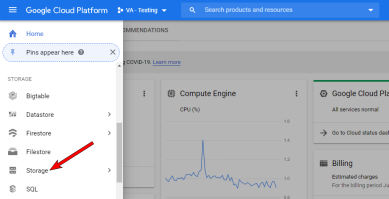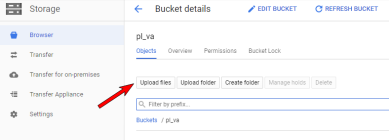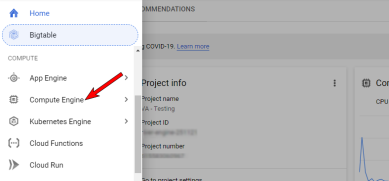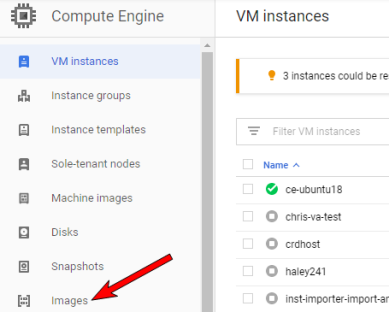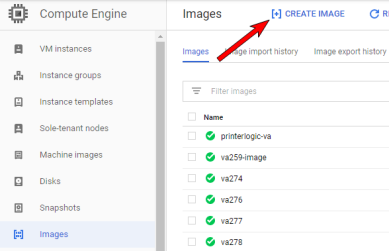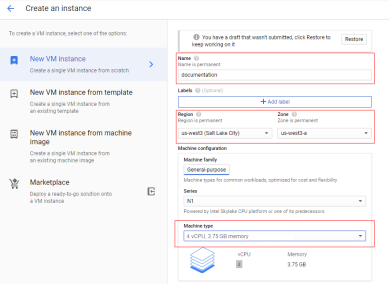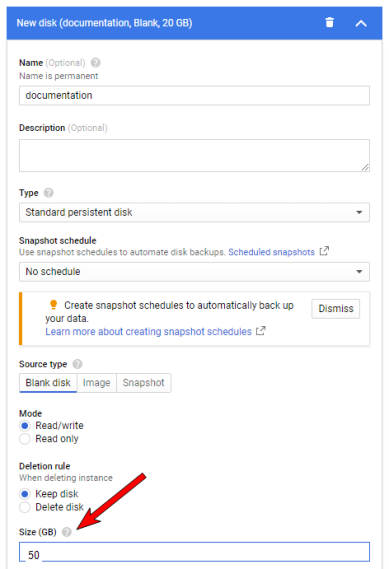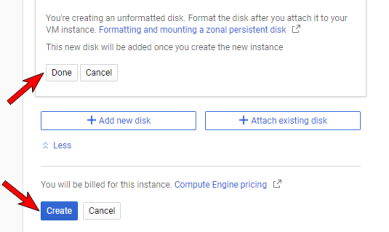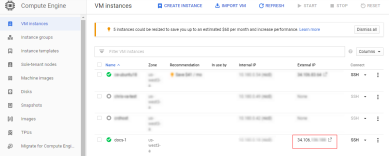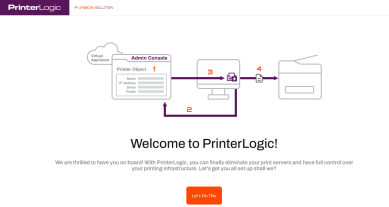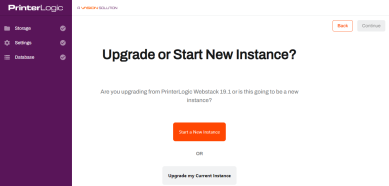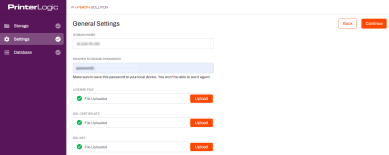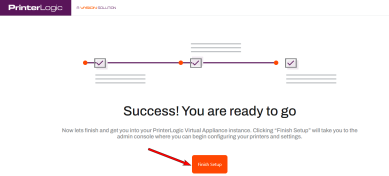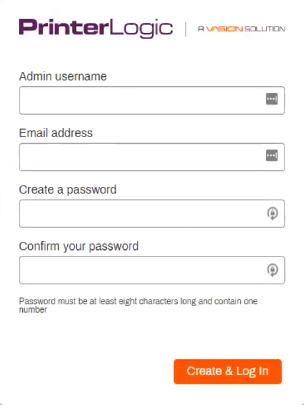Last updated: April 04, 2024
Set up Virtual Appliance - Google Cloud Platform
The PrinterLogic Virtual Appliance is the latest generation of PrinterLogic's private cloud platform. Typical use cases include:
- It’s a streamlined, self-contained solution for new customers who want the benefits of PrinterLogic’s serverless printing infrastructure but need tighter control over their print environment.
- For PrinterLogic Web Stack customers, the Virtual Appliance is a path forward to get the latest features PrinterLogic has to offer. Switching over is a track change but provides the newest functionality and ongoing support.
The PrinterLogic Virtual Appliance gets distributed as a fully integrated, standards-based private cloud solution. As a result, it helps customers maximize their investments in virtual infrastructures designed to reduce unnecessary hardware, software, and ongoing maintenance costs.
The PrinterLogic Client deployment, by default, checks for the use of SSL certificates for security considerations. Using SSL Certificates to encrypt data between the Virtual Appliance and other connected systems is highly recommended to ensure the confidentiality and integrity of your communications. Not using SSL Certificates will require additional configuration that may require assistance from PrinterLogic support engineers.
Minimum System Requirements
Depending on the configured features and user count, the minimum requirements for the Virtual Appliance may increase. Use the recommendations below when creating your Virtual Appliance, but continue to monitor the CPU and RAM utilization and allocate additional resources as needed.
- Four 3.5-4.0 GHz processors. Add two 3.5 GHz processors for each additional 15,000 users.
- 16GB RAM for up to 15,000 users.
- Add 2 CPUs / 8GB RAM for each additional 15,000 users.
- Add a minimum of 2 CPUs and 4GB RAM if using the Internal Service Client.
- Add 2 CPUs and 4GB RAM per 500 CPA/Simple Badge Release installations.
- 150GB free hard disk space for the host disk.
- There should be 50GB of free hard disk space on the persistent storage disk (add 4GB for every 100 printers).
- There is a requirement for NTLMv2 to connect to the appliance-storage shared folder of the PrinterLogic Virtual Appliance.
If you are migrating from a Web Stack instance please refer to the steps on Web Stack Migration to Virtual Appliance. Only continue if you are setting up a new installation of the Virtual Appliance.
Prerequisites
- Download the Virtual Appliance vmdk file.
- DNS configured properly.
- Identify a FQDN to use for the PrinterLogic Virtual Appliance (i.e., printerlogic.mycompany.com).
- Create an A record in DNS (i.e., printerlogic.mycompany.com) that points to the IP address of the Virtual Appliance.
- Create a CNAME record in DNS (i.e., *.printerlogic.mycompany.com) that points to the A record above (i.e., printerlogic.mycompany.com)
- SSL certificates created and available.
- The SubjectAlternativeName extension must list the two DNS entries above (i.e., printerlogic.mycompany.com and *.printerlogic.mycompany.com). In depth information can be found in the Virtual Appliance SSL Certificates document.
- Open ports for DB access from your machine:
- TCP 3306 - MySQL
- TCP 80 - HTTP
- TCP 443 - HTTPS
- TCP 8000 - Configuration API
- TCP 8080 - Configuration UI
- TCP 445 - SMB
- (Optional) If you are using advanced features requiring a Service Client, you must ensure the Service Client gets appropriately configured. See Set up a service client for more information.
Initial Configuration
- Log into Google Cloud Platform.
-
Select Storage from the menu on the left.
-
Either create a new storage bucket or select an existing storage bucket.
-
After creating or selecting a storage bucket, select Upload Files.
-
Upload the Virtual Machine Disk file (.vmdk) that was downloaded in the prerequisites.
It is recommended that this step be done from a PC with an internet connection that supports high upload speeds due to the large file size.
Convert the VMDK
This process can take up to 40mn.
-
Back on the Google Cloud Platform home screen, select Compute Engine from the left side menu.
-
From the new menu displayed on the left, select Images.
-
From the top menu, select Create Image.
- On the Create Image screen:
Configure the Image
-
Back on the Google Cloud Platform home screen, select Compute Engine from the left side menu.
-
From the new menu displayed on the left, select Images.
-
Click on the newly created image name, then select Create Instance at the top.
-
Give the instance a name, select appropriate Region and Zone, and select the Machine Type that meets the recommended system requirements of:
- Four 3.5-4.0 GHz processors. Add two 3.5 GHz processors for each additional 15,000 users.
- 16GB RAM for up to 15,000 users.
- Add 2 CPUs / 8GB RAM for each additional 15,000 users.
- Add a minimum of 2 CPUs and 4GB RAM if using the Internal Service Client.
- Add 2 CPUs and 4GB RAM per 500 CPA/Simple Badge Release installations.
- 150GB free hard disk space for the host disk.
- There should be 50GB of free hard disk space on the persistent storage disk (add 4GB for every 100 printers).
Port 8080, 8000, 3306 and 443 must be open to complete the setup phase.
Scroll down to the Firewall section and select the appropriate settings to allow your workstation to communicate with the Virtual Appliance.
Select Disks, and then scroll down and select the Add new disk button.
Give the new disk a name and set a size (50 GB is recommended).
Click Create on the bottom left.
Locate the IP of the newly created virtual machine and copy it.
If you will be using a fully qualified domain name for accessing your Virtual Appliance, you should configure it in DNS and assign it the IP address shown on this console. You would also need to have the license file that PrinterLogic provides to contain the same FQDN for the licensed URL. When you are done with configuration from the above URL, the system will redirect you to the FQDN/URL you have in your license. If you are just testing and don’t need to manage more than 5 printers, you can continue to access the server via IP.
Launch the Virtual Appliance Wizard
The following steps are ONLY for setting up a new Virtual Appliance. If you are migrating from Web Stack to the Virtual Appliance, continue the migration by selecting Client Cut-over: Step 9 or DNS Cut-over Step 9.
The steps below are for creating new Virtual Appliance instances. If you are upgrading from an older host build, reference Host Upgrade.
- Open your preferred, supported browser window, and paste the IP address into the Address Bar, including port 8080. Example: 192.168.10.20:8080.
-
When the PrinterLogic Virtual Appliance wizard appears, click Let's Do This.
-
Select the Storage Type drop-down and select VM-Attached Virtual Disk.
- Click Format Attached Storage.
-
When the attached disk is ready, click Continue.
-
If creating a new Virtual Appliance instance, click on Start New Instance.
-
When the General Settings appear add the domain name, then upload your license file, SSL certificate, and SSL key. When finished, click Continue.
Ensure you document and save the Shared Storage Password so you can access the Data Drive later as needed. You can find more information on accessing the shared storage at the end of this document.
-
When the Setup Database settings appear, make adjustments on the database type and then click Continue.
If you want the MySQL database to reside on the VM's data drive, then leave the default settings for Database Type.
-
Click Finish Setup.
Please do not refresh the page during the installation procedure.
- A new "Thank You" browser window will open when the installation is complete. This window can be closed as needed.
-
The PrinterLogic Virtual Appliance login window appears, where you can Set up Login Credentials
- Once you are logged in, you will need to accept the License Agreement.
-
You are now ready to work with your PrinterLogic Virtual Appliance.
Accessing Data Files
If you need to add or update a license file or certificate or access the log files, you will need to map a network drive to the Virtual Appliance folder share. This can be done by using a non-elevated command prompt using a command similar to:
net use V: \\<hostname>\appliance-storage <password> /user:Admin /p:yes.
If the password contains special characters you will need to place "quotes" around the password.
Make sure you use a non-elevated command prompt to map the drive. If you have Windows UAC enabled on your workstation, drives mapped from an elevated command prompt are not visible in Windows Explorer by default. You can find additional information in Microsoft documentation.
-
Released: November 21st, 2024
Updated Application Version Included
-
New Mobile App Release
iOS: November 11th, 2024 -
Released: November 11th, 2024
